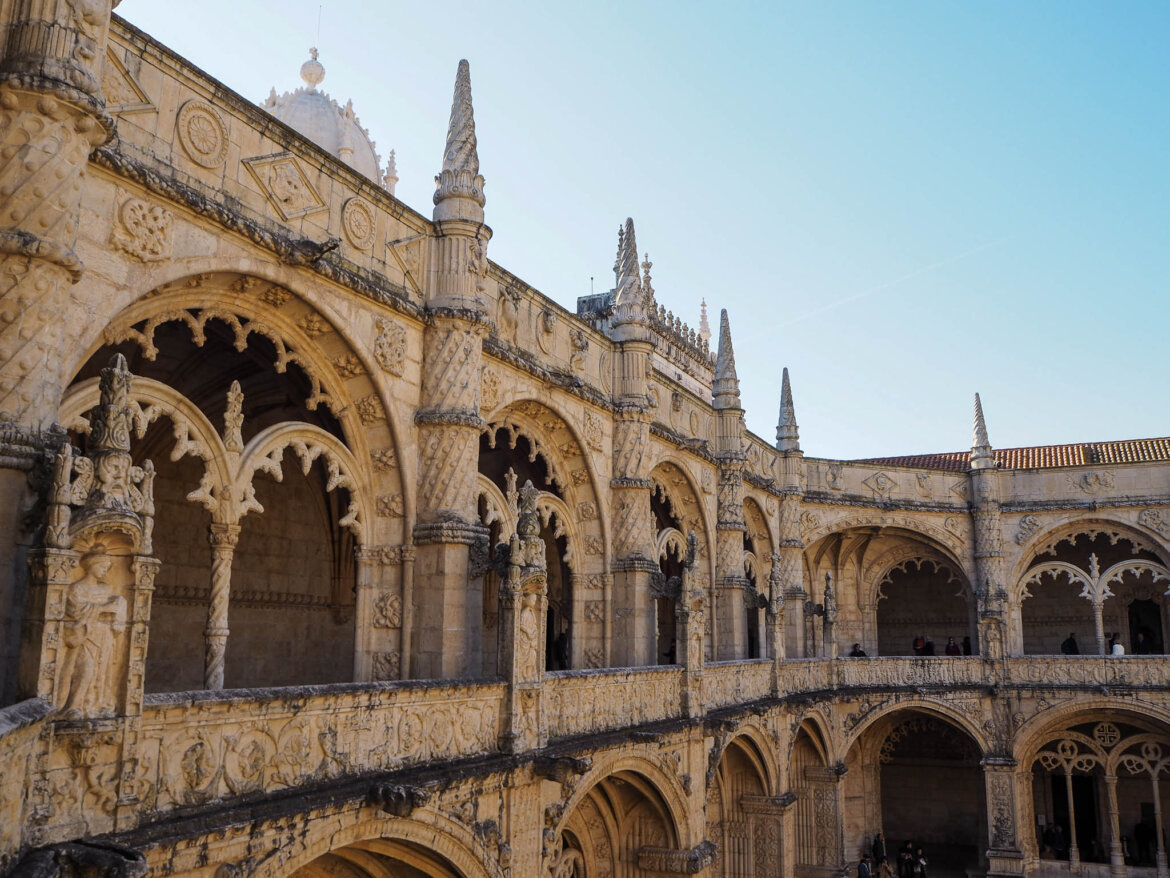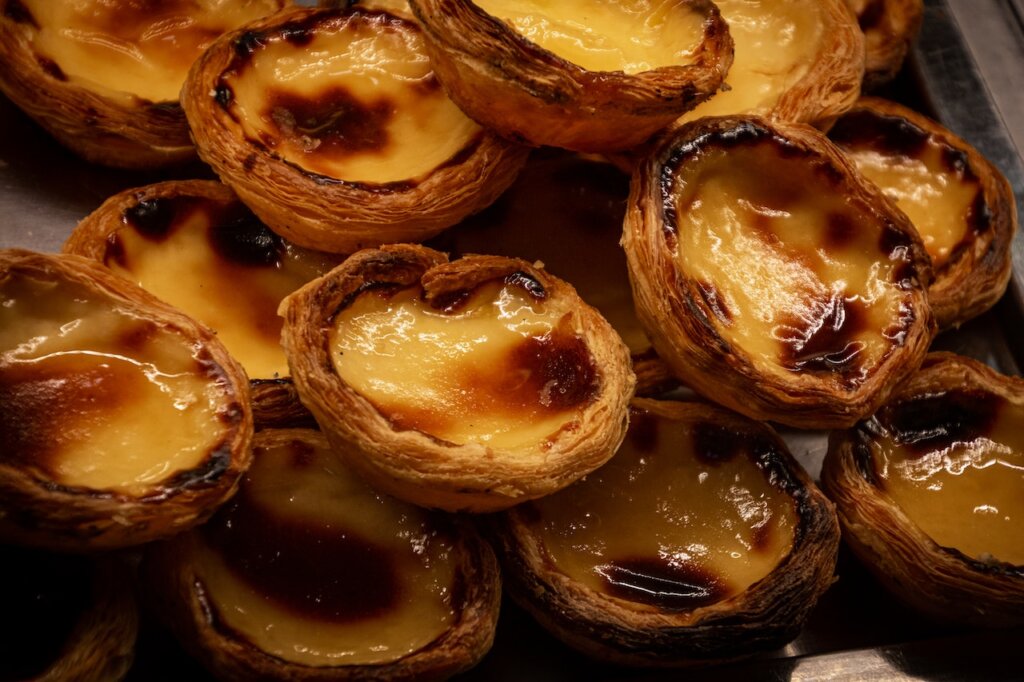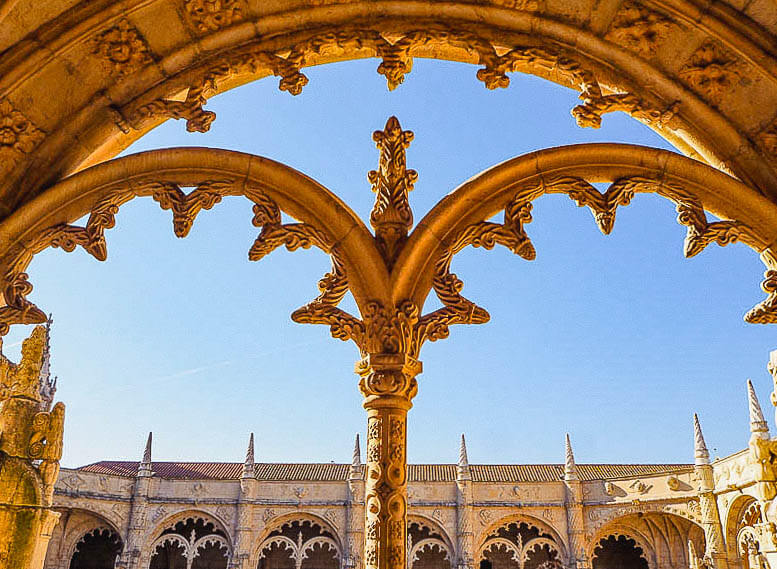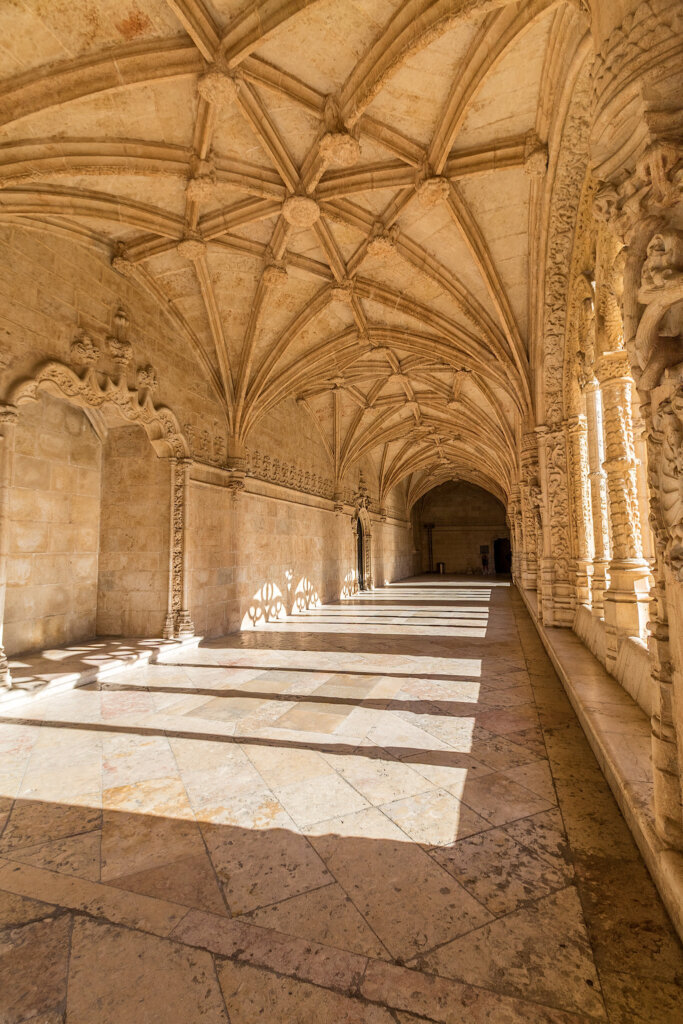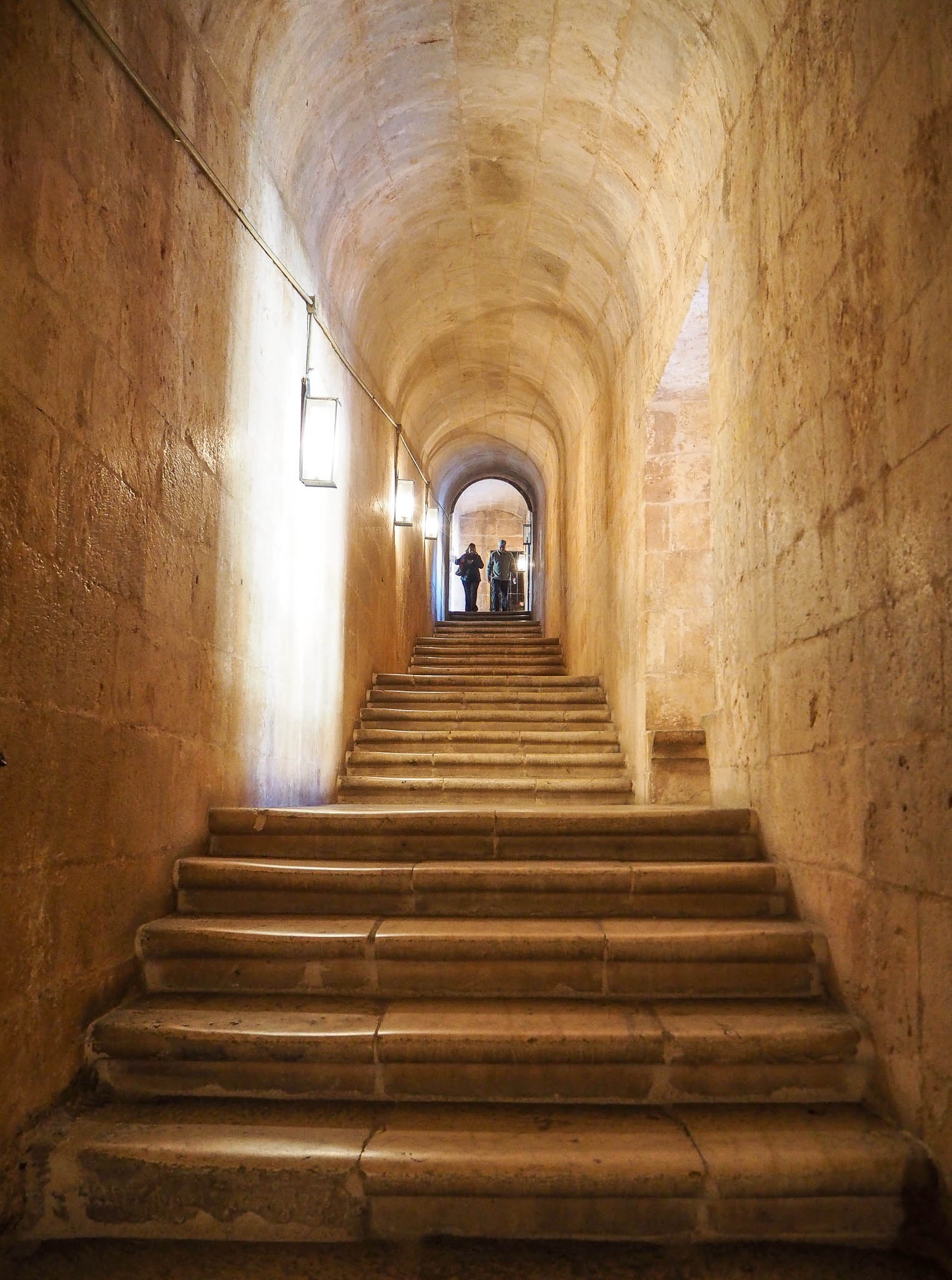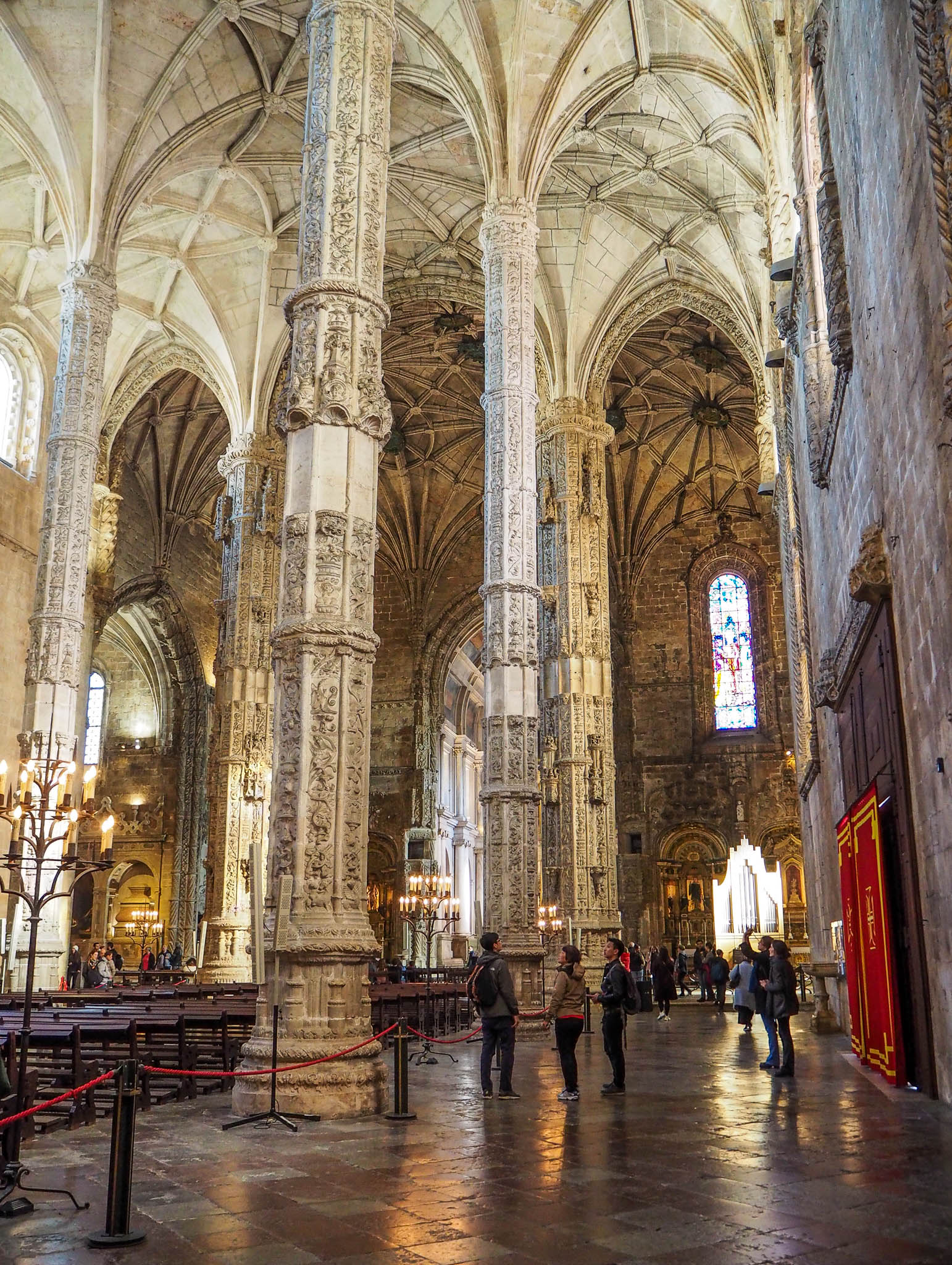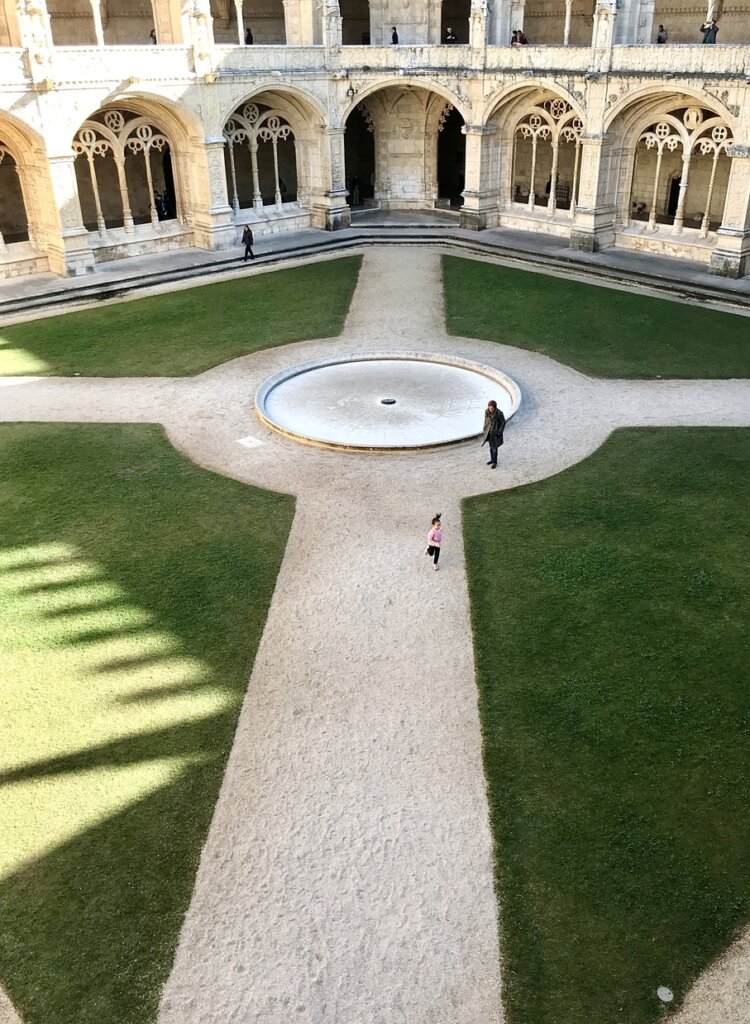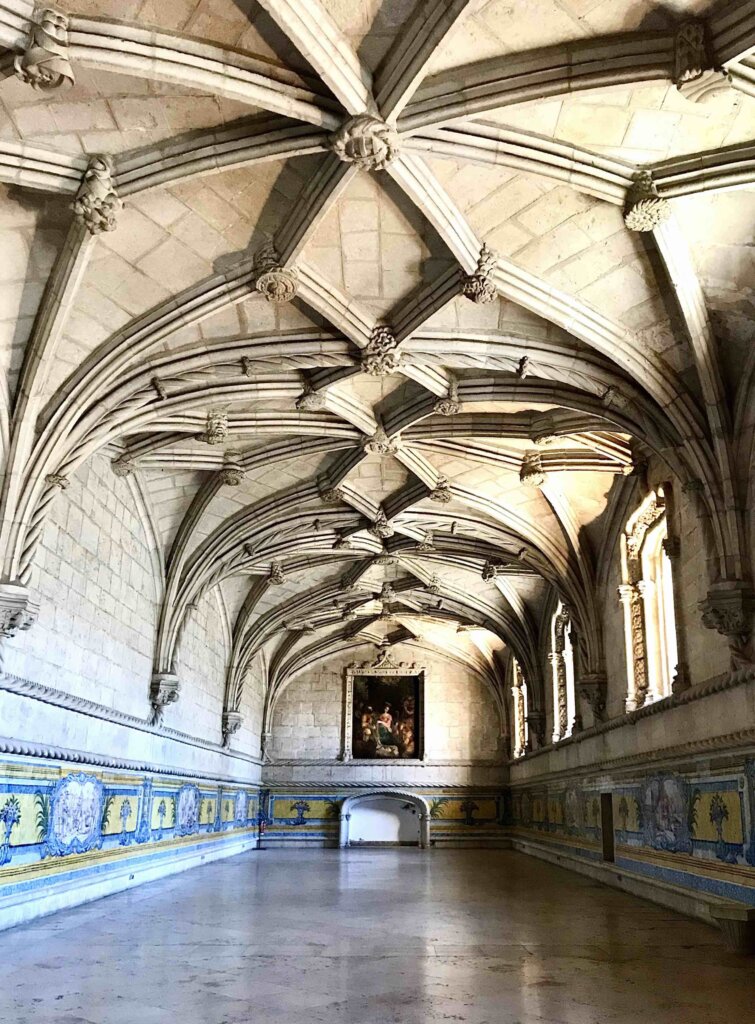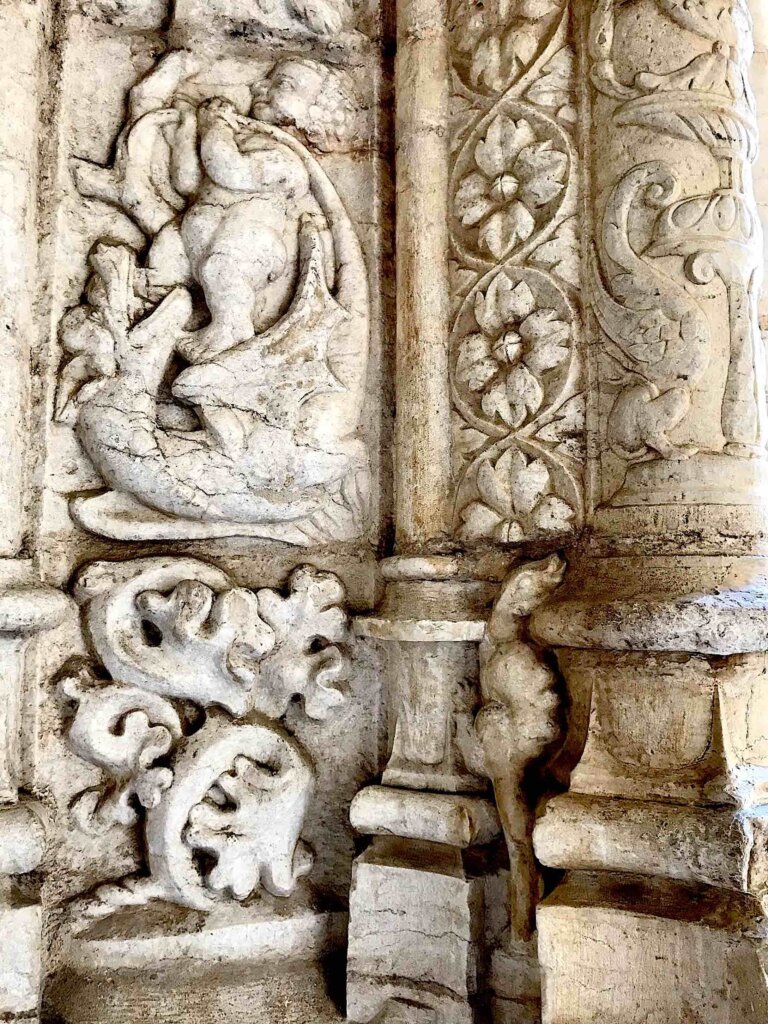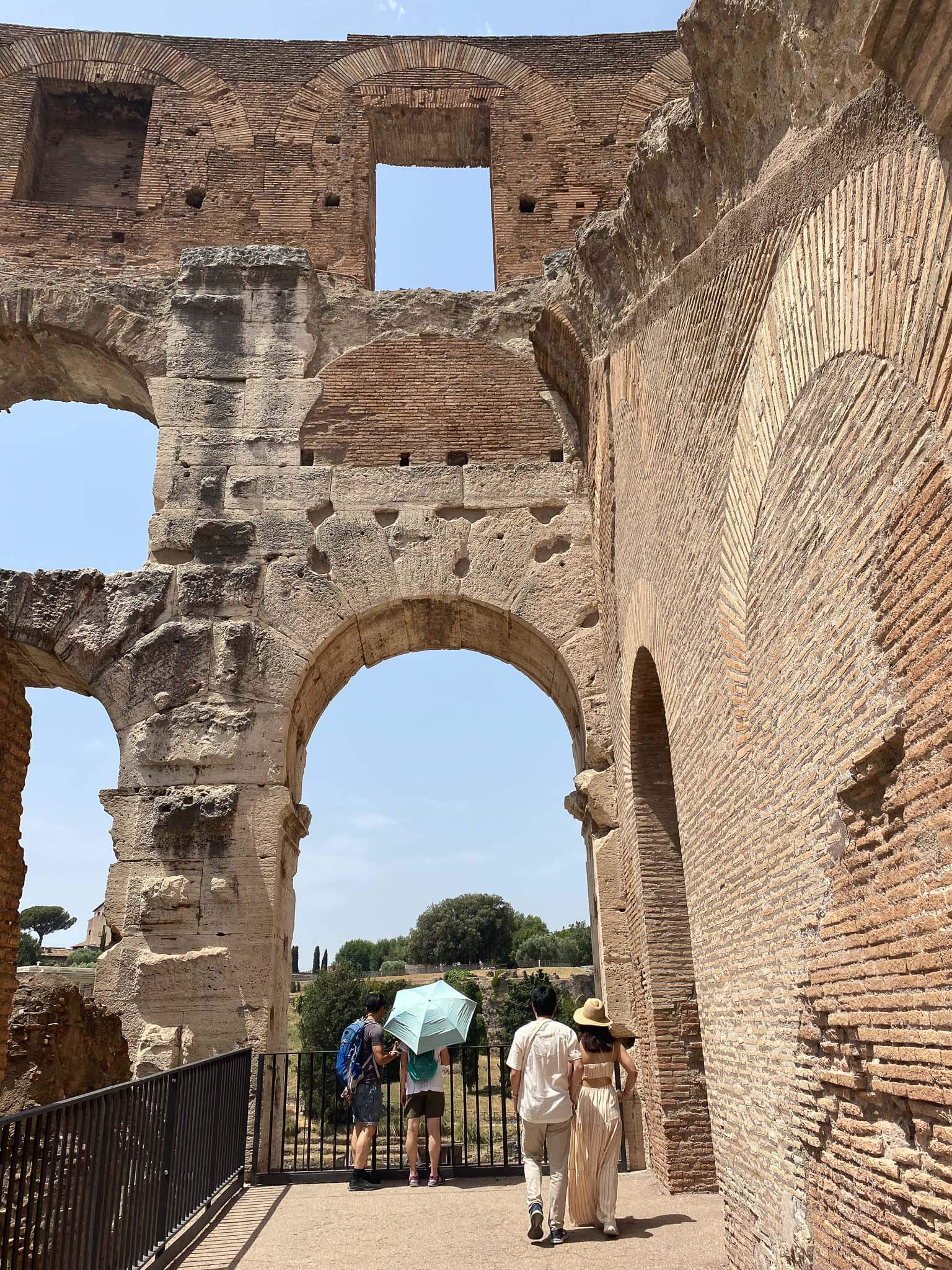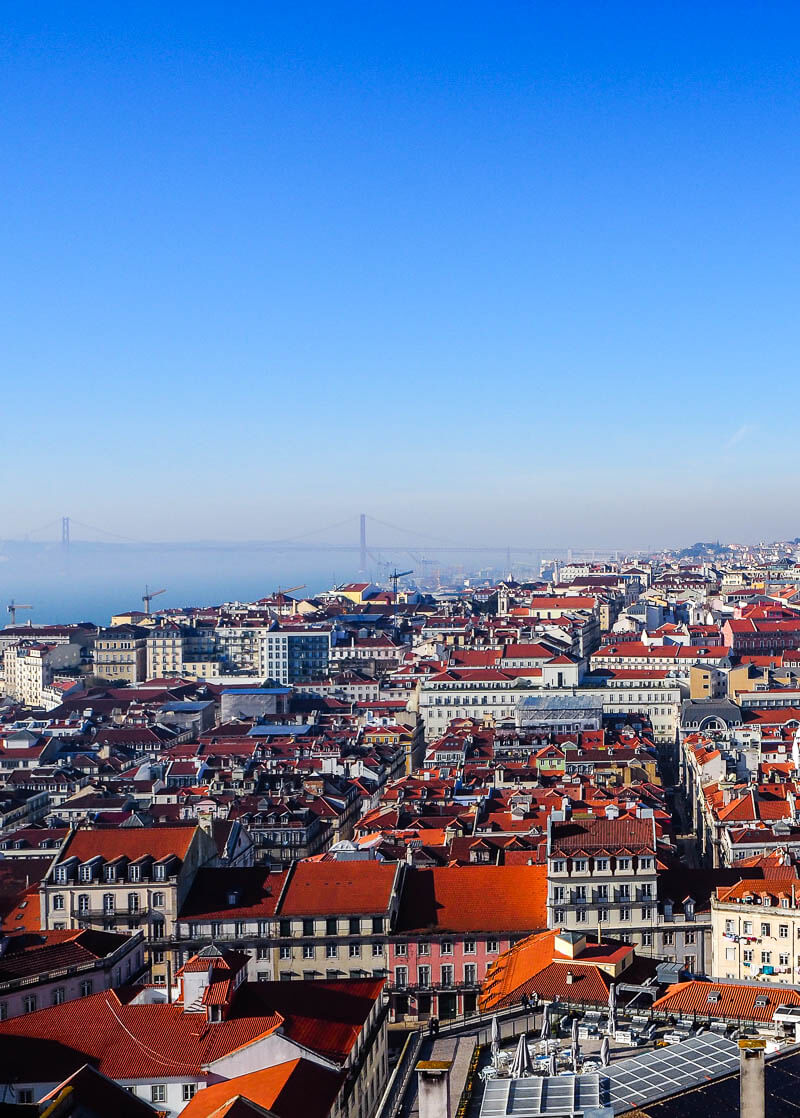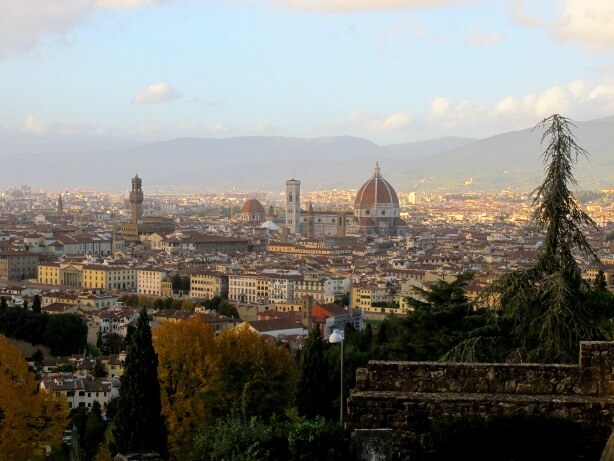If you love architecture like I do, you must put the Jerónimos Monastery on your list of things to do in Lisbon! It’s an easy day trip from Lisbon and should be combined with a stop at the Tower of Belém, the Monument to the Discoveries, and the famous Fábrica de Pasteis de Belém, where you can buy the pastry pastel de Belém. Learn all about this beautiful monument, the Jerónimos Monastery Belém:
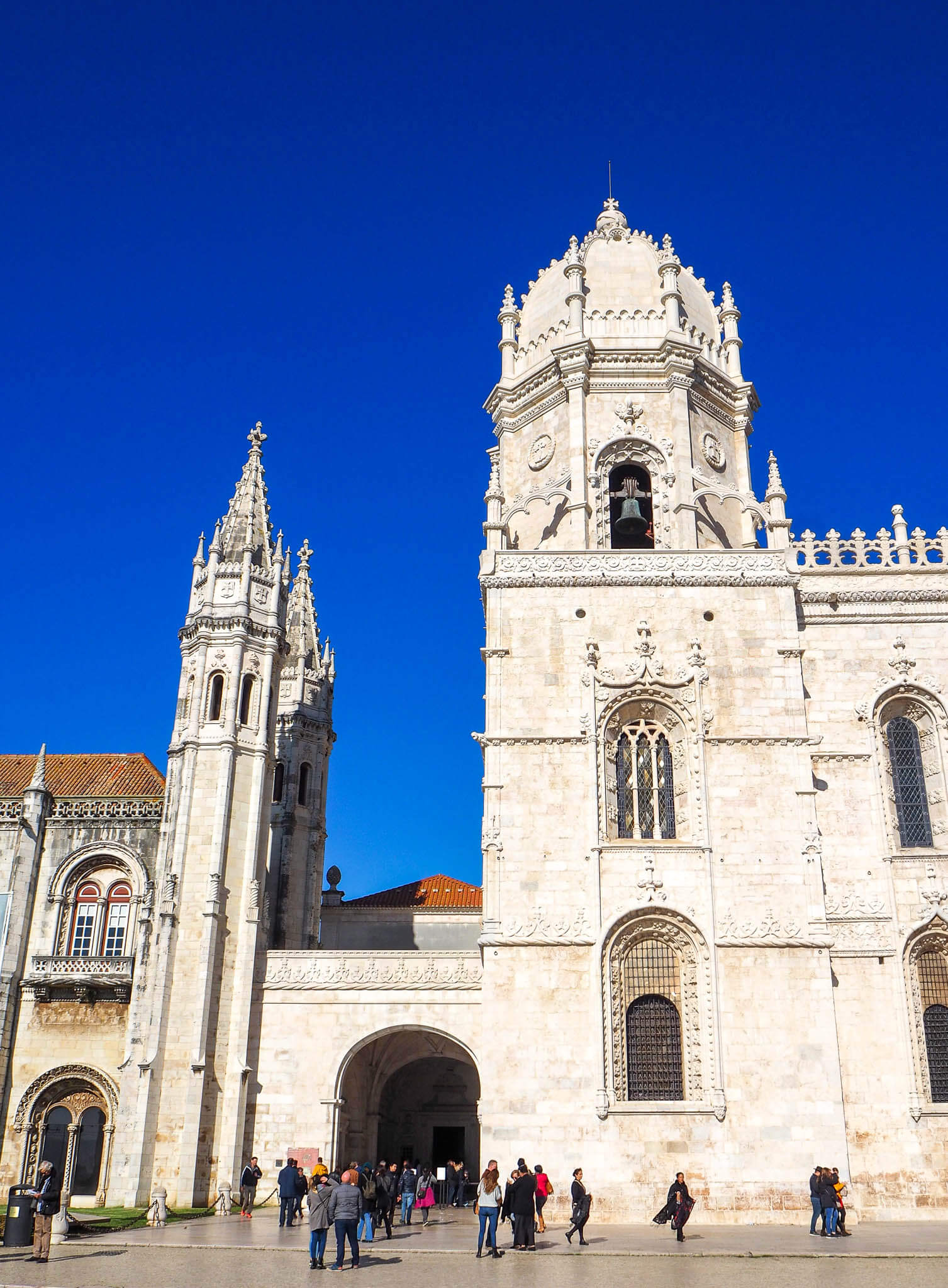
Table of Contents
How much does the Jerónimos Monastery cost to enter?
Entrance to the monastery is 10 Euros per adult, kids up to age 12 are free, kids 13-18 get a 50% discount
Family tickets with a 50% discount are available for adults with at least 2 children.
Students with ID and seniors 65 and over receive a 50% discount.
Free on Sundays before 2 pm for Portuguese residents.
Read more: How much does a trip to Lisbon cost?
What are the hours of the Jerónimos Monastery?
Open 9:30-6:00 Tuesday-Sunday. The last ticket is sold at 5pm and the last entrance is 5:30 pm.
In the winter, it may close at 5 pm with the last entrance at 4:30 pm.
Closed Mondays and on major religious holidays: Christmas, Easter Sunday, January 1, and May 1.
Try to avoid Sunday mornings when Portuguese residents receive free admission.
Where is the Jerónimos Monastery located?
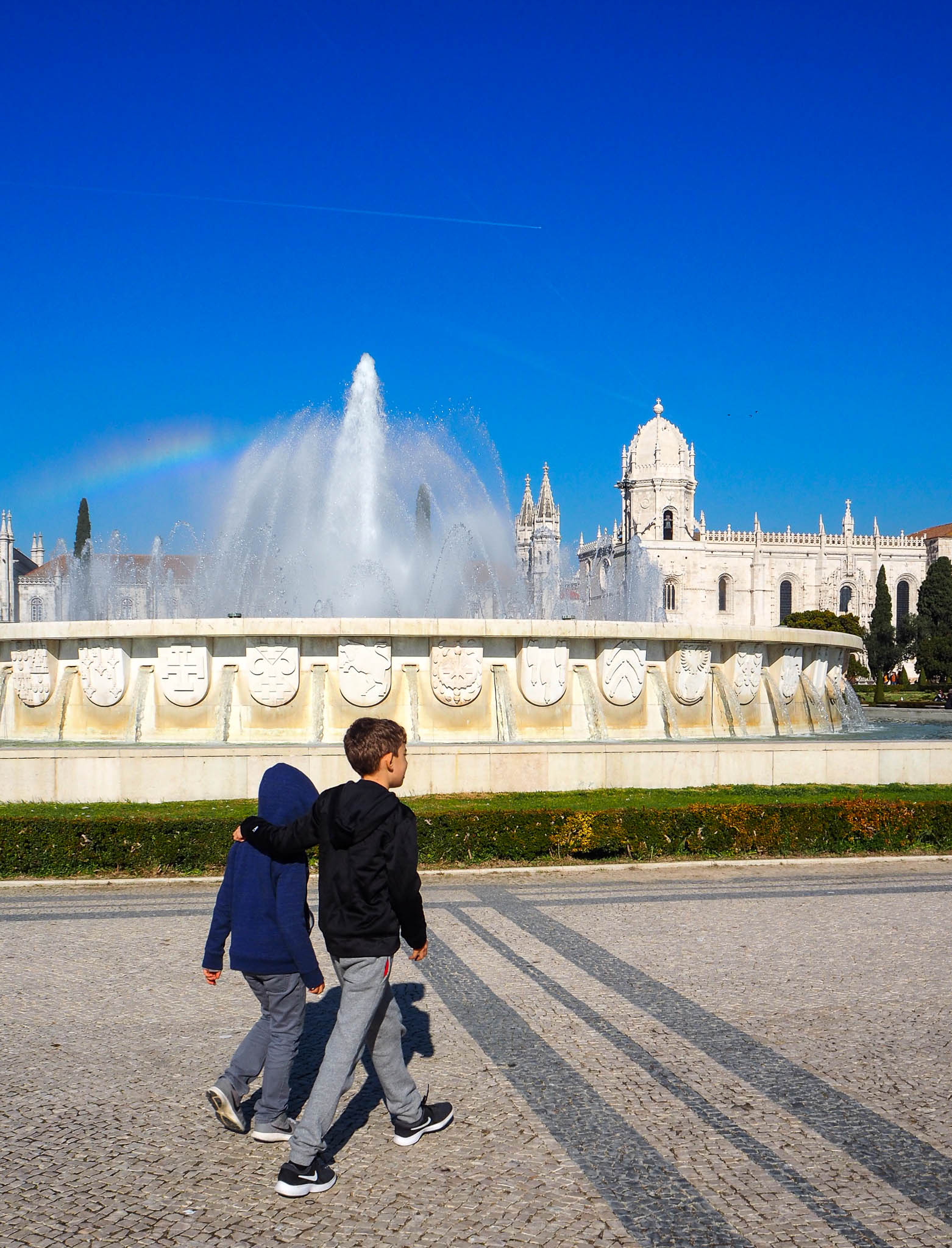
The Jerónimos Monastery is located in the small city of Belém right next to Lisbon. Belém can be visited by taking a tram or taxi from Lisbon. Depending on where you are staying in Lisbon, the taxi ride will take about 10-20 minutes.
After visiting the Tower of Belém and the Monument to the Discoveries, both located on the waterfront, you will see the Praça do Império (Empire Square) with its large fountain and park. The enormous monastery is located just behind the square. You can’t miss it! It is within walking distance of the Tower of Belém and the Monument to the Discoveries.
Read more: How much does a trip to Lisbon cost?
How can I visit the Jerónimos Monastery?
Plan a visit to this monastery as part of a day trip to Belém from Lisbon. You’ll need a half a day to visit the main attractions in Belém: the Tower of Belém, the Monument to the Discoveries, and the monastery.
I suggest going in the morning before it gets warm and include a stop at a cafe for a coffee and snack. You can try the famous Fábrica de Pasteis de Belém for the egg custard pastry pastel de Belém before returning to Lisbon for the rest of the day.
If you arrive in Lisbon at lunchtime, try stopping at the Time Out Market located near the waterfront just as you come into Lisbon from Belém.
History of the Jerónimos Monastery
The Jerónimos Monastery, also called the Hieronymite Monastery, was founded by King D. Manuel I in the early 16th century. The first stones were laid in 1501 or 1502, but it took 100 years to complete!
The king gave orders to construct this monastery in a place of special importance to Portugal during the Age of Discoveries. It was the site of a church where men who worked on the sea gathered for refuge and monks prayed for their safe journeys as they set off in their quest for the New World.
In fact, it was this very place where, in 1497, the famous navigator Vasco de Gama and his crew spent their last hours before leaving for India, a journey that was later recognized as the first trip to India from the Atlantic Ocean.
The Hieronymite monks (the order of St. Jerome) continued to live and work here for more than four centuries until 1833 when the order was dissolved. At that time, the monastery was no longer used for religious purposes. Nowadays, the church maintains its religious services as the parish of Santa Maria de Belém.
Apparently, the local egg custard pastry that has become so popular (pastel de nata, also known as pastel de Belém because they’re from the town of Belém) was made by the monks at the monastery!
Read more: Portugal Travel Tips
Why visit the Jerónimos Monastery?
The Mosteiro dos Jerónimos, also called the Hieronymite Monastery, is a UNESCO World Heritage Site and an outstanding example of the Manueline architectural style from Portugal in the 16th century.
The monastery’s architecture reflects the great power of Portugal during the Golden Age of Discovery of the 15th and 16th centuries when they dominated intercontinental trade routes.
You may have visited many other monasteries and cathedrals before, but this one is likely to be unique due to the unusual architectural style. It’s also huge with many beautiful passageways and rooms to look at.
Besides the many hallways and rooms that you can just wander, don’t miss these main attractions:
— The ornate South Portal
— The church with its elaborately carved octagonal pillars and vaulted ceilings. This is an exceptional example of the late Medieval accomplishment of achieving the greatest amount of ceiling space without supports.
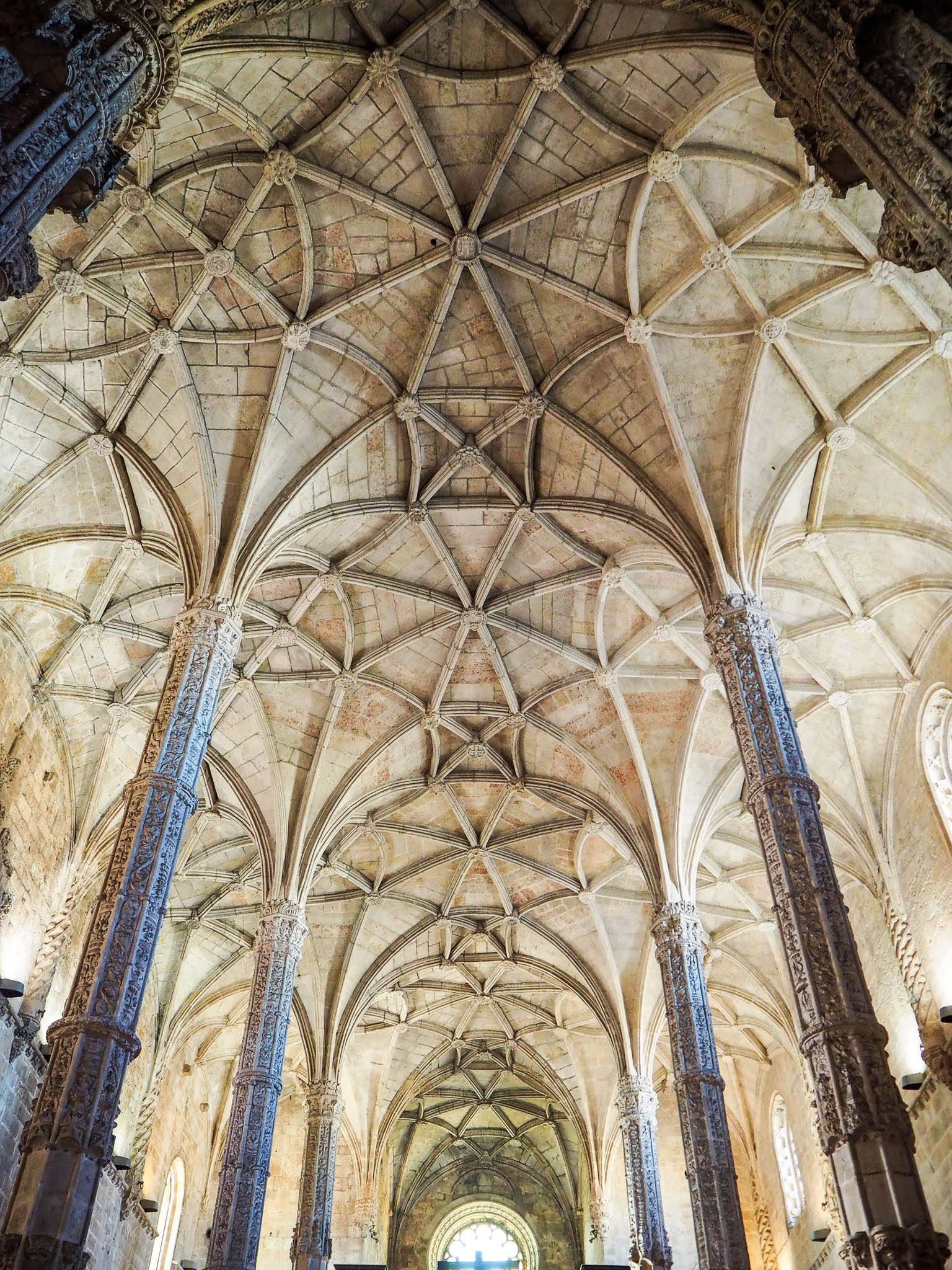
— Inside the church, you can visit the tombs of the royal family of King Manuel I, the explorer Vasco de Gama, the royal family of the House of Aviz, and the great Portuguese poet Luís de Camões. Some of the tombs are located in the lower choir.
— In the monastery, you can visit the cloister with arched walkways and green space in the middle. You will see the somber tomb of the great early 20th-century poet Fernando Pessoa here.
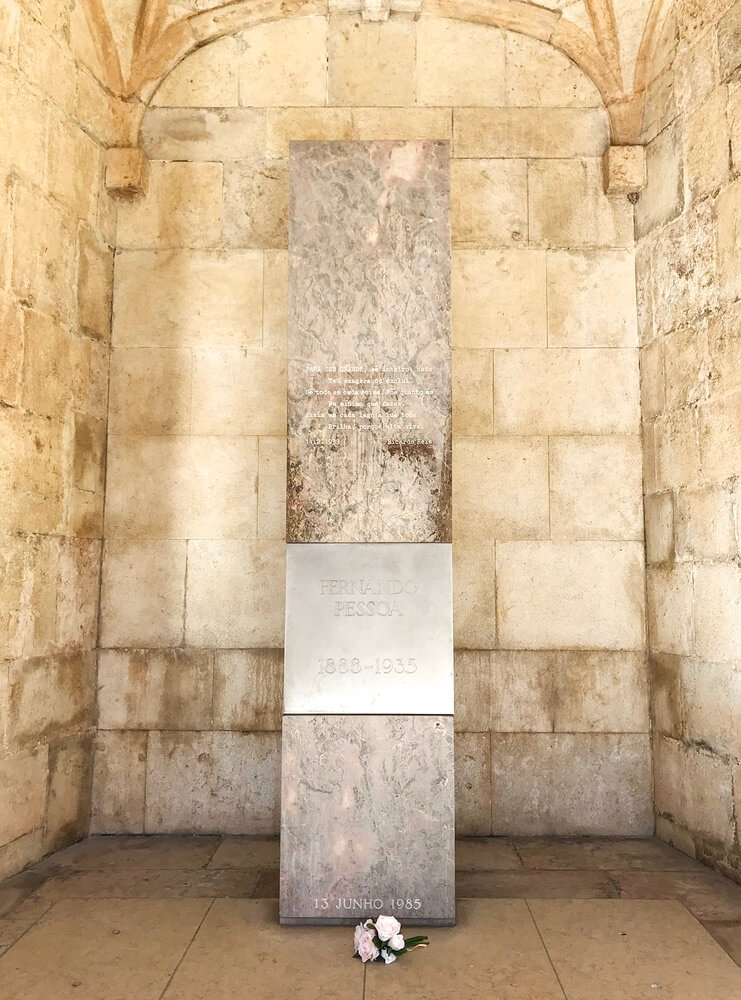
— The refectory, or dining hall, which was built in 1517-18. Note the thick stone ropes carved into the walls (a nod to sea exploration, I would guess) and the azulejos tiles. These beautifully painted tiles were added in the 18th century. They depict scenes from the life of Joseph — the Old Testament — and the Miracle of the Bread and the Fish in the New Testament.
The Manueline style of architecture
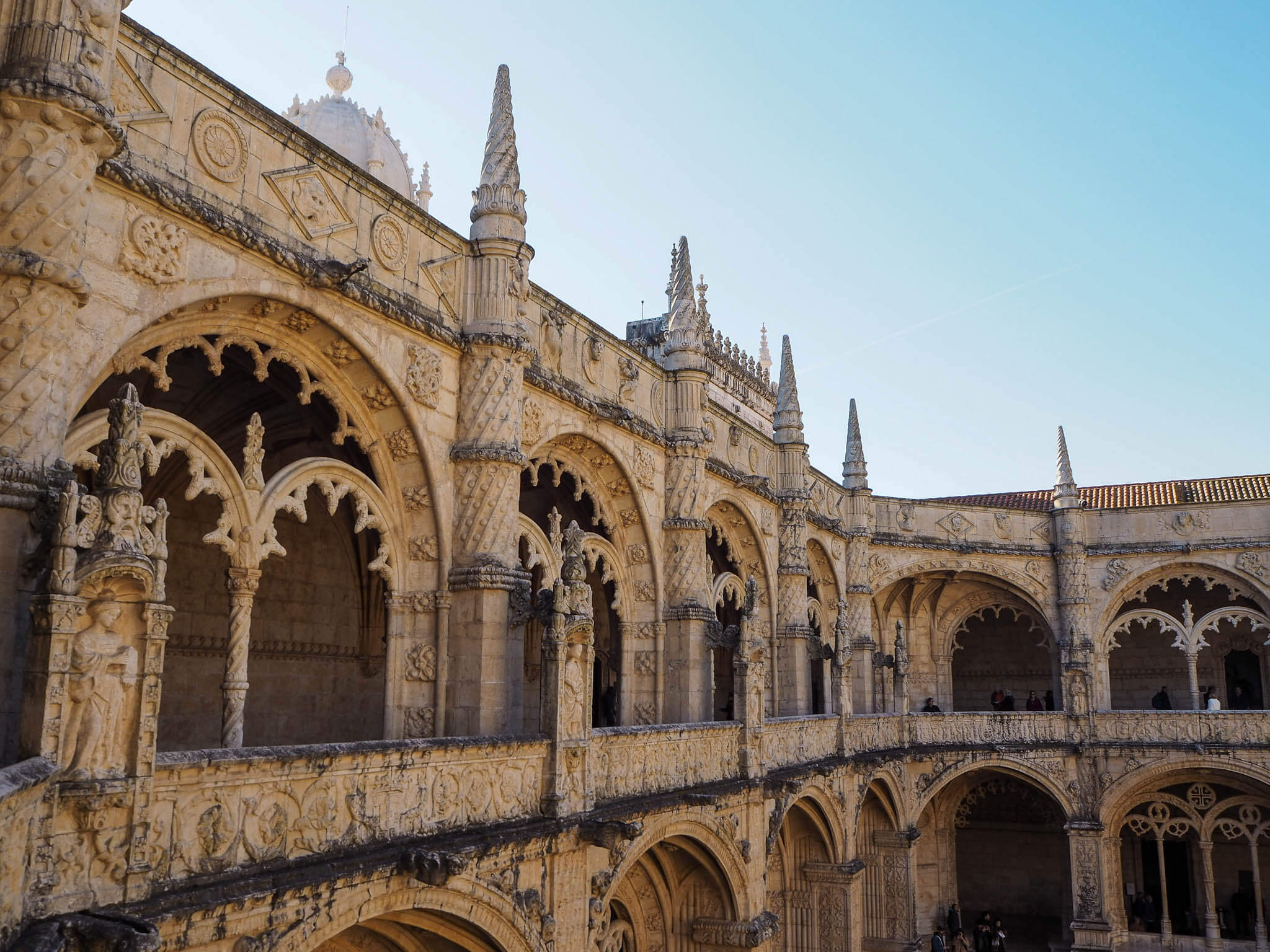
When I visited the Jerónimos Monastery, I’d never heard of the Manueline style of architecture but quickly realized that it blends the elements of Late Gothic with the extreme ornateness of Moorish architecture. The details, especially on the columns, that depict animals and plants make this place a wonder to marvel at. There are so many interesting details to soak up!
The style also includes many details inspired by the explorers’ sea voyages — anchors, ropes, sea creatures, and other maritime symbols. It is quite a unique style, one that you won’t forget!
All in all, the Jerónimos Monastery makes a perfect day trip from Lisbon. It shows you a piece of history from the glory days of Portugal and is an excellent example of Manueline architecture. This UNESCO World Heritage Site is certainly worth putting on your list of top things to do in Lisbon.
Have you visited the beautiful Jerónimos Monastery near Lisbon?

